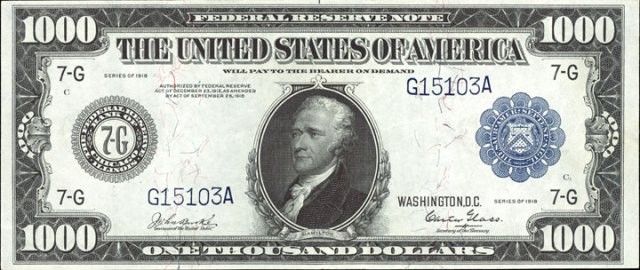 Who’s in control of the city?
Who’s in control of the city?
The city of Baltimore has roughly 612,000 people. It’s a number that continues to decline because, let’s be honest, the city has very serious deficiencies. For most of its residents, particularly those without money, it is not a good place to live and work.
Unemployment is 5.6% compared to 4.3% statewide and only 4% in Baltimore County. Many lower income residents have jobs, but aren’t paid enough to make a living. Underemployment – when people have no choice but to take jobs below their potential – may be an even bigger problem.
By median household income, Baltimore is ranked 22 out of Maryland’s 24 counties. According to the Census Bureau, almost a quarter of the city is living in poverty.
Crime is awful. Public education for the city’s 84,000 students is ranked dead last in the state.
These are very, very significant problems, the solving of which requires setting priorities and an urgent focus of all available resources on their resolution. Those resources are limited. Some of even the most interesting government-supported projects will have to wait, perhaps indefinitely, until Baltimore can provide the basics of quality life to its residents.
So what is the Mayor doing about all this? The current Mayor and the Mayor before her? Is it even possible for local government save the City of Baltimore or is it already too late and now just a matter of time?
Actually, those aren’t the questions we should be asking. More to the point, does the Mayor really care? Is she paying attention? Where is the urgency? Who’s really in charge? To whom does she answer when it comes to defining the short list, the all-consuming emergency objectives of her government?
Baltimore City has 389,000 registered voters, 306,000 of which are Democrats. Round numbers, 133,000 voted for Mayor in the 2016 Democratic primary. That’s a turnout rate of only 43.5% which is low, particularly given what’s at stake. Mayor Pugh won the primary with only 36.6% of the vote, hardly a mandate, particularly given that she beat Sheila Dixon by only 2408 votes.
Before Mayor Pugh, the Mayor of Baltimore was Stephanie Rawlings-Blake. She was a successful candidate for City Council, succeeded Mayor Dixon when she resigned and was then elected Mayor for two terms. Over the course of her career in elective politics, Mayor Rawlings-Blake received 5,700 campaign contributions totaling $3.96 million. Money, of course, wasn’t the only reason she was a successful candidate, but it was certainly a big help. And, in all likelihood, she wouldn’t have won and have kept winning without it.
The problem is that over 50% of her career campaign financing came from only 421 contributors. In fact, 117 contributors – mostly people and companies related to real estate development and other businesses – were the source of 25% of her career campaign fundraising. So she had just 421 major contributors – including many companies, not just people – making contributions of $1000 or more that accounted for half of the almost $4 million she raised. Just 421 large dollar contributors compared to the over 600,000 people she was elected to represent as their Mayor. A good number of the 421 weren’t even residents or city-based companies.
In January 2011 alone, Mayor Rawlings-Blake raised $632,825 of which $525,000 (83%) was from only 294 corporate and personal contributors giving her campaign donations of $1000 or more. Why so much money in just one month? In the middle of an election cycle, more than a year before the 2012 Democratic primary? Of these 294 contributions, 188 were from “Business/Group/Organization” entities that gave $250,350 – not including substantial additional contributions from individuals related to these entities.
 In Mayor Pugh’s case, the pattern is similar. Over the course of her career in the Maryland Senate and now in her first term as Mayor, she’s raised $5.25 million from 6,652 contributions. More to the point, just over 700 corporate and individual contributors gave her 50% of every dollar she used to get elected. Only 381 of these contributors were responsible for 25% of the millions she raised.
In Mayor Pugh’s case, the pattern is similar. Over the course of her career in the Maryland Senate and now in her first term as Mayor, she’s raised $5.25 million from 6,652 contributions. More to the point, just over 700 corporate and individual contributors gave her 50% of every dollar she used to get elected. Only 381 of these contributors were responsible for 25% of the millions she raised.
If you were Mayor Rawlings-Blake or Mayor Pugh, to whom would you feel more responsible? When do you jump and how high when the phone rings? Do you answer to the people who voted for you? Is your primary concern for the children who, because they attend Baltimore public schools, aren’t going to be competitive for jobs and college admissions? Or do you answer, directly and through the Baltimore Development Corporation, to the developers and other companies that have given you the money you needed to get all those votes?
Put yourself in Mayors Rawlings-Blake’s and Pugh’s shoes. Who elected you? The people who cast their votes or the large dollar contributors whose money made it possible for you to campaign for those votes? Who do you work for?
Now ask yourself, for example, why saving Pimlico and developing a downtown “entertainment zone” to protect the Horseshoe Casino are making headlines. Why not the urgent crises that are the collapse of public education and the two-thirds of the city’s families struggling every day to get by? These are the real, the paramount, life and death crises of Baltimore City. Unfortunately, they’re just not high priorities on the “To-Do Lists” of the Mayor’s major campaign contributors. And until the people of the city fix this, until they elect a Mayor who answers to them and not to a handful of developers and other business interests, Baltimore is going to continue to be a city on the decline without the bright future its people deserve and have the innate, but untapped ability to make for themselves.
For the record, it’s not that the city’s Mayor is corrupt. It’s just that she doesn’t work for the people who elected her as much as for the people who paid to get her elected. It’s just business. It’s just businesses wanting a return on their investments.

The Hamilton $1000 bill, the minimum to qualify as “Friends of (Whoever) for Mayor.”

